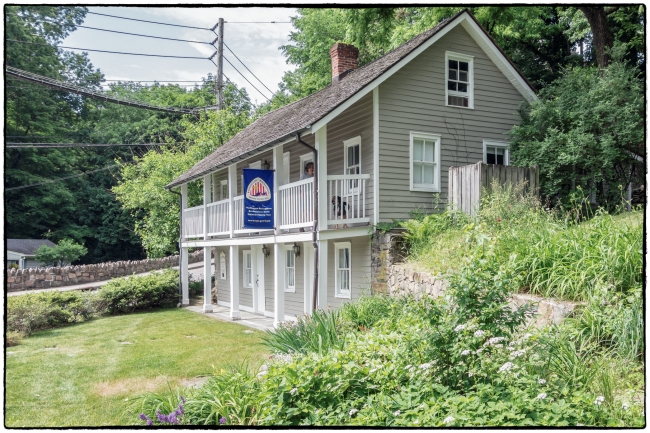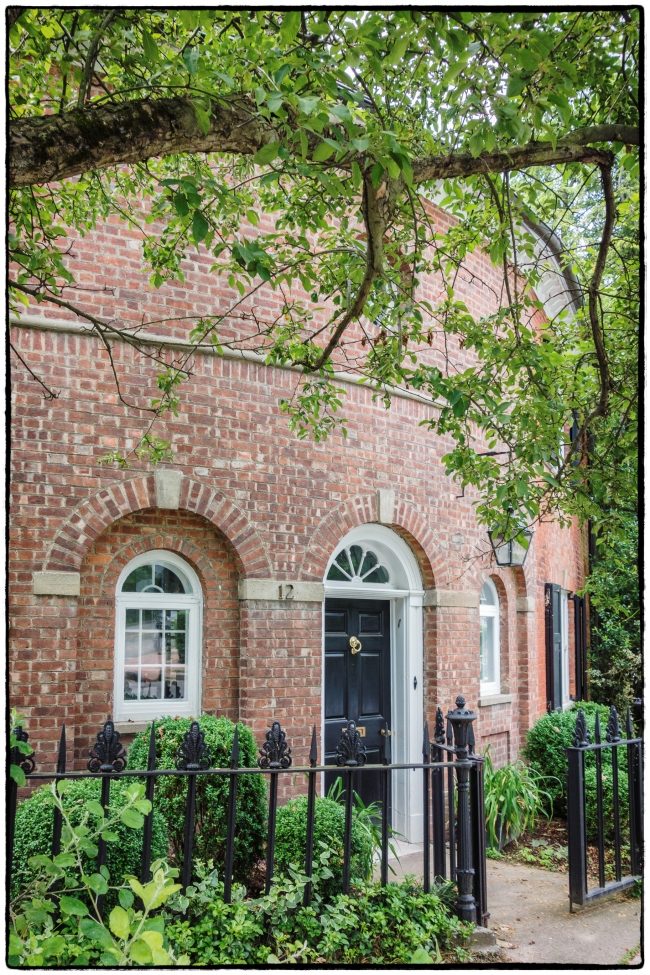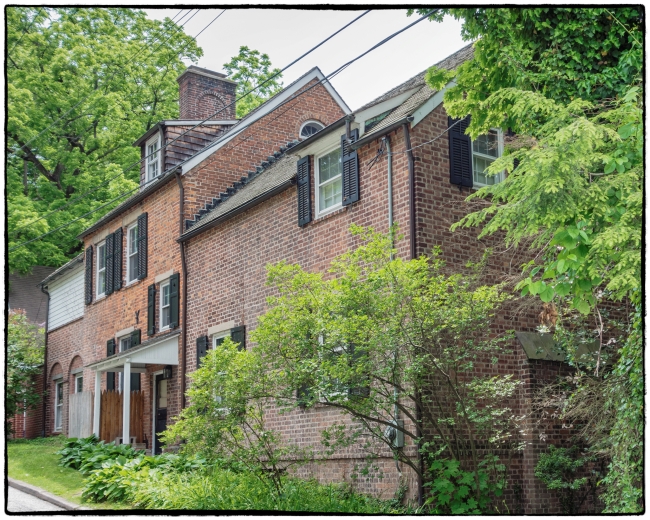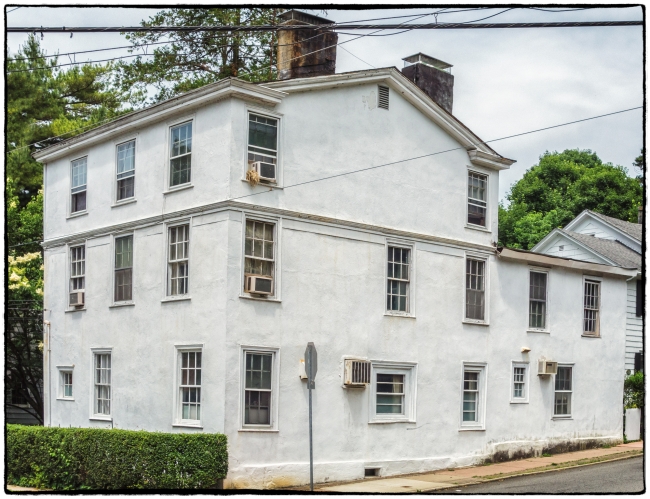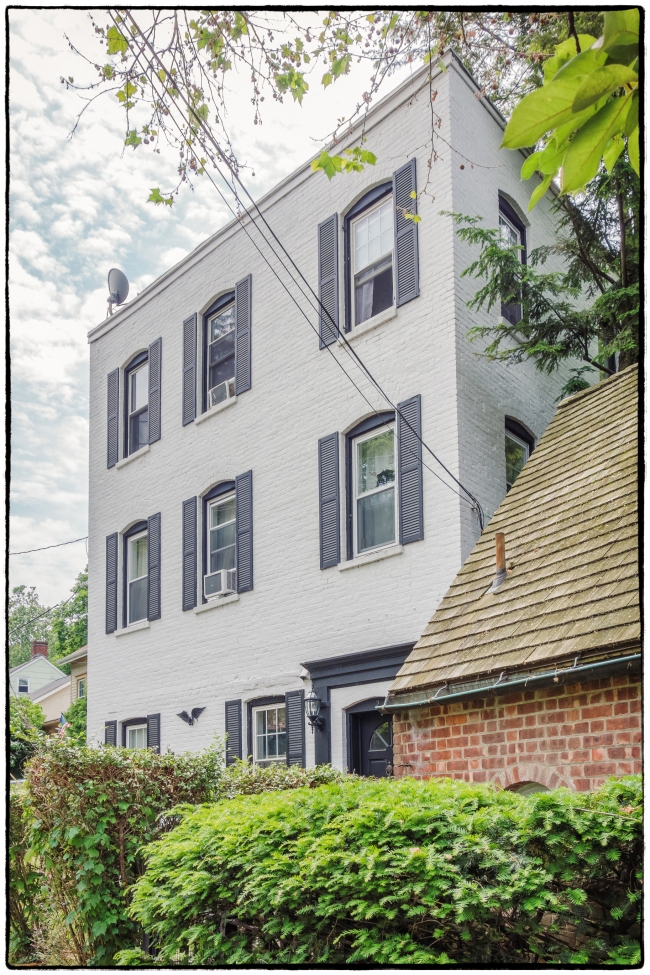I’ve been living near Sparta for about eighteen years and for most of that period have passed through it twice a day on the way to work and back. Never once have I thought to look up its history and to date I have not taken the walking tour (I’ll have to rectify that). Below, a few of the many historic homes in Sparta.
According to Wikipedia Sparta:
is a neighborhood of the village of Ossining in New York. Sparta borders the Hudson River south of most of the village of Ossining. The neighborhood was a hamlet of the town of Ossining, and remains its oldest community. Sparta was founded by Dutch settlers in the 17th century. It has zip codes 10510 and 10562. The elevation is 56 feet.
The neighborhood includes the Sparta Historic District, the Jug Tavern, and the Sparta Cemetery. The New Croton Aqueduct, Old Croton Aqueduct, Old Croton Trailway State Park, and Trailways State Park Aqueduct transverse the neighborhood.
Above, The Old Jug Tavern:
74 Revolutionary Road. The Jug Tavern, or Davis-Garrison House, is believed to be the oldest surviving structure in the Village of Ossining. The northern half of the house was probably built by Peter Davis soon after his marriage in January 1758. Peter died before 1795, but his widow owned the house at least until 1810. By 1830, the house was owned by Nathaniel and Annie Garrison. Nathaniel died in 1843, but Annie lived there until her death in 1869 at the age of 99.
It is not clear how the Davis-Garrison House got the name “Jug Tavern,” but Nathaniel Garrison may have sold liquor by the jug, without benefit of a license, as there is no record of a tavern license having been granted to any occupant of the house. Mrs. William Mowatt sold the house to the Town of Ossining and the Ossining Restoration Committee in 1975, and the deed was transferred to the non-profit corporation Jug Tavern of Sparta Inc. in 1976. This house was rebuilt in 1884 and renovated from 1975 to 1991. It was entered in the National Register of Historic Places in 1976.
12 Liberty Street. This brick house with a Georgian-style curved front consists of the original square structure on the right-hand side, built in 1789 of Flemish bond construction, and the addition that was built during the Vanderlip restoration of Sparta between 1919 and 1922. The house was the Union Hotel, owned by Thomas Sherwood, in the 1860s and ’70s, and the Washington Inn in 1895. The local lore is that George Washington once slept there.
Sparta residents once got their water from a well in front of the house, at the intersection of Liberty Street and Rockledge Avenue. This was the site of the village well until about 1920.
1 Rockledge Avenue. The original center portion of this brick house, built in 1784, is of Flemish bond construction. The owner, Josiah Rhodes, operated a mustard mill, in partnership with William Kemeys, on Sparta Brook from at least as early as 1797. Rhodes died in 1807.
Legend has it that the house served as George Washington’s headquarters while he stayed at the hotel across the street at 12 Liberty Street. The left and right wings were added in 1921 by Vanderlip‘s contractor, William Crawford. Andrew Lyon, a weaver, lived in the house during the 1860s and ’70s, and Harry Hopkins of the Franklin Roosevelt administration lived there from 1932 to 1936.
11 Liberty Street. This stucco house was built before 1820 and has been extensively altered since then. The building was a hotel called the “Branch House,” owned by A. Vanderhoff, in the 1860s and 1870s. It was the grocery and general store of Edward Storms at the turn of the century.
2 Rockledge Avenue. This white-painted brick house was built as a warehouse in about 1820. A large opening in the front, probably to allow horse-drawn carts to enter and exit, has been bricked in. A merchantile firm, Cypher & Slater, occupied the building in the 1860s and ’70s, and a grocery store was on the ground floor (and possibly a brothel on the upper floors) at the turn of the century. The house now contains five apartments.
With the exception of the extract from Wikipedia all of the quotations are taken from A Self-Guided Tour of Sparta. Historic Sparta Walking Tours are conducted throughout the Spring, Summer and Fall. The tours are guided by Dr. Alan M. Stahl, Sparta historian, resident and president of Jug Tavern of Sparta, Inc., who details the history of the Jug Tavern as well as Sparta’s homes and residents over the past 200 years. Check the Calendar for a schedule of Walking Tours and details.

